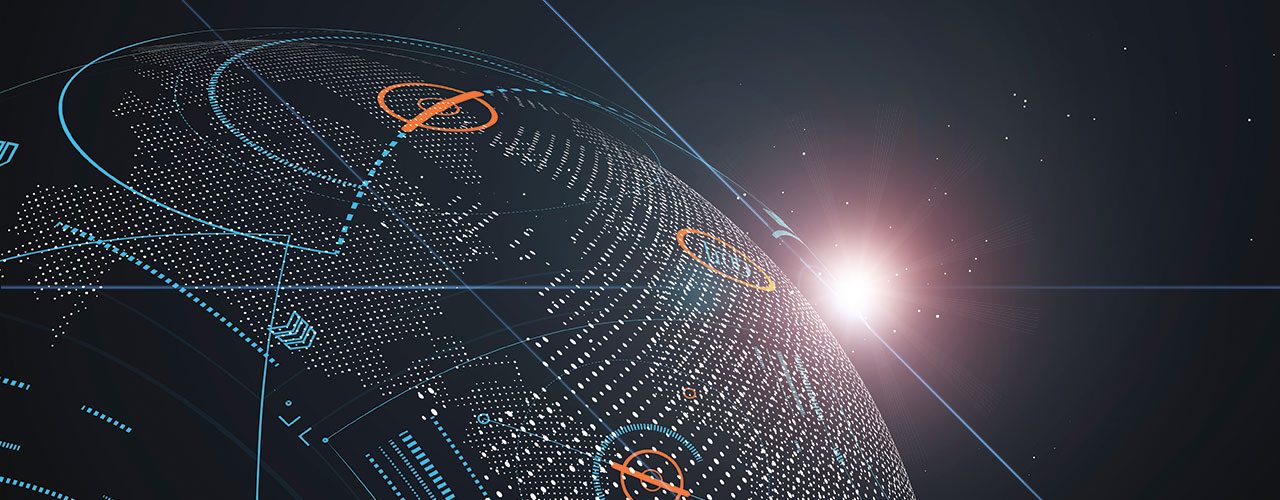BLOG
Top 7 Geospatial Trends to Watch in 2018
By Dr. Qassim Abdullah, Chief Scientist, Woolpert Geospatial Services

Let’s talk geospatial trends. Here are the seven that I predict will dominate the geospatial community’s 2018 conversation:
- Geiger-mode and single photon lidar
New lidar technologies, including Geiger-mode (GM) and single photon (SP), will continue to break into the conventional lidar market. Since their market introduction nearly five years ago, these new lidar technologies have struggled to become mainstream. In my opinion, their progress will remain sluggish in 2018 as long as manufacturers refuse to sell their systems to data providers. By competing directly with data providers, manufacturers have upset the balance between system and data providers. Additionally, they have limited the field use and maturation of their own technology. Imagine where we would be if Optech, Leica or Riegel had followed a similar business practice? The thousands of systems managed and operated by data providers around the globe contributed greatly to the maturity and success of current linear mode lidar technology. To further complicate matters, Ford subsidiary Argo AI recently acquired Princeton Lightwave, the leading supplier of GM cameras. This acquisition presents new challenges for manufacturers of new lidar systems attempting to enter the market and alter the dynamics of the current GM and SP tech monopoly. Despite this hurdle, I remain optimistic that new manufacturers of GM or SP lidar will soon offer opportunities for lidar data providers to buy and operate their own GM or SP lidar systems.
For more: Evaluation of Single Photon and Geiger-Mode Lidar for the 3D Elevation Program
- BIM, VR and AR
During the last year, demand surged for 3D geospatial products that support building information modeling (BIM), virtual reality (VR) and augmented reality (AR). This trend will likely experience steady growth throughout 2018 and into the years beyond. Technologies such as stereo imagery and 3D lidar—whether aerial, mobile or stationary—are perfectly suited for such modeling applications.
For more: How Maps are Morphing the A/E Industry
- Smart cities and smart transportation services
Across the globe, cities and transportation managers are witnessing a revolutionary transition—they are getting “smart.” The AEG industry is poised to earn a substantial market share of the services needed to support smart road and facility infrastructure mapping and inventory.
For more: Demystifying Smart Cities: How Base Mapping Will Help Navigate Your Future
- Unmanned aircraft systems
Use of unmanned aircraft systems (UAS) will skyrocket during 2018 with a focus on the production of high-quality engineering products that can readily support current mobile and aerial metric mapping sensors. The year 2018 will undoubtedly see increased deployments of larger UAS as well as more capable and accurate sensors.
For more: Small UAS: Don’t Be Disrupted by Disruptive Technology
- Oblique imagery and city modeling
The growth associated with the previous trends will place strong demands on more efficient 3D data capture technologies and services. Over the last few years, we have welcomed at least two new lidar and digital cameras for 3D modeling from small aircraft. Such technology simultaneously collects high-density lidar data and high-resolution oblique imagery to bridge the gap between mobile mapping and high-altitude data collection. During 2018, we will witness noticeable growth in the demand for such systems, and subsequently, new and better offerings from manufacturers.
For more: Want 7x Better Orthoimagery? It’s a Renaissance®
- Cloud data storage and processing
Many public and private agencies have already moved their data storage and processing to commercial clouds; even more are currently considering it. Every day, new multiplatform applications are developed to enable users to communicate directly with their cloud-based data using mobile devices and computers. Within the geospatial community, we will surely witness even more demands for such services as concerns about cost, speed and security are mitigated.
- On-demand, web-based mapping and mapping as a service (MaaS)
Different business models have been tested for the public sale and download of data through web-based portals. Recently, we were introduced to a new business model proposed by companies such as Nearmap and Spookfish. In this model, users request on-demand data acquisition for nearly any location in the world. The customized data is then delivered to the user within just a few days. Such offerings are receiving significant attention, and I expect to see steady growth in this data delivery model.

Qassim A. Abdullah, Ph.D., PLS, CP
As Woolpert’s Chief Scientist, Qassim has more than 40 years of combined industrial, R&D and academic experience in analytical photogrammetry, digital remote sensing, and civil and surveying engineering. When he’s not presenting at geospatial conferences around the world, Qassim teaches remote sensing courses at the University of Maryland and Penn State, authors a monthly column for the ASPRS journal PE&RS, and mentors R&D activities within woolpert_labs.